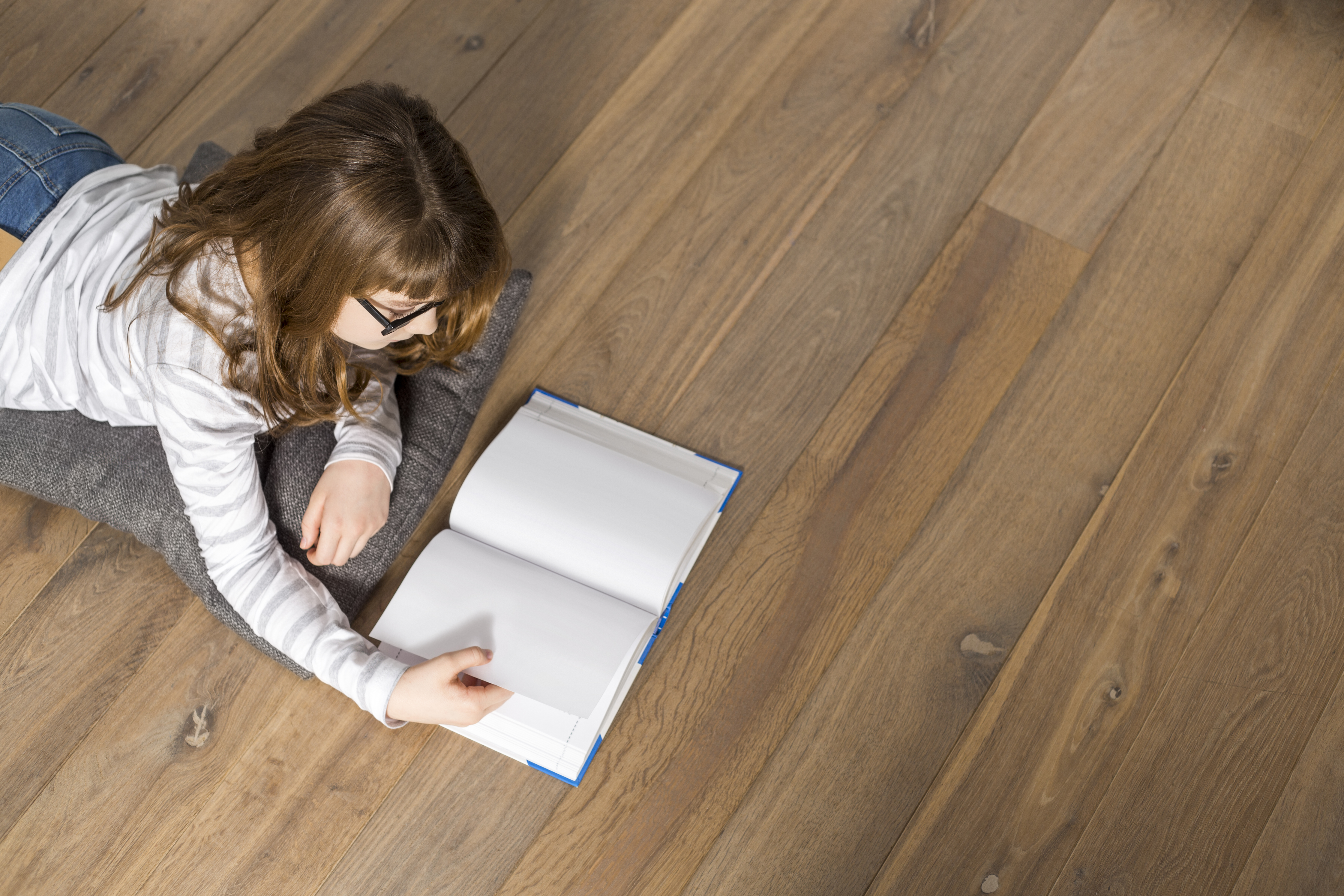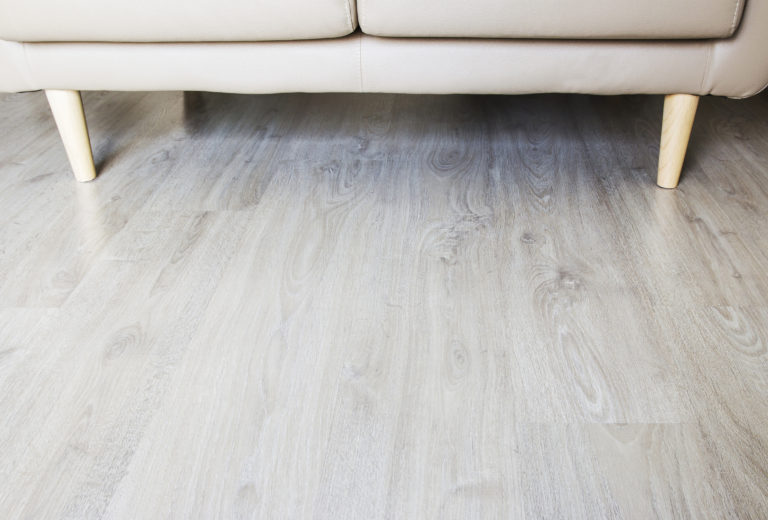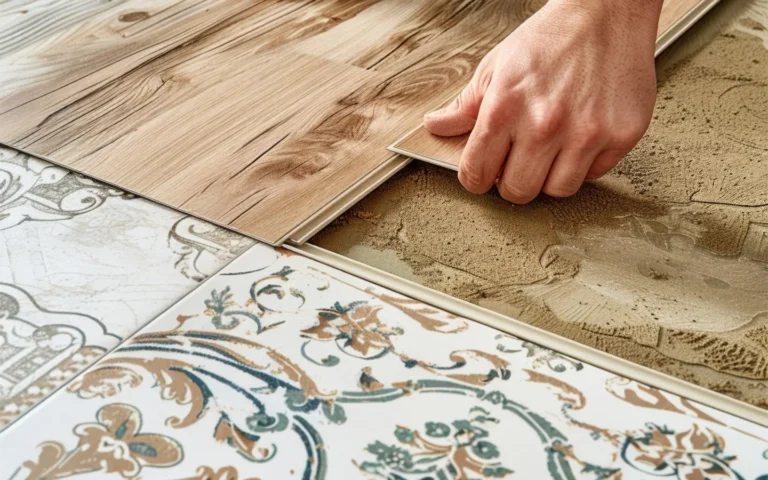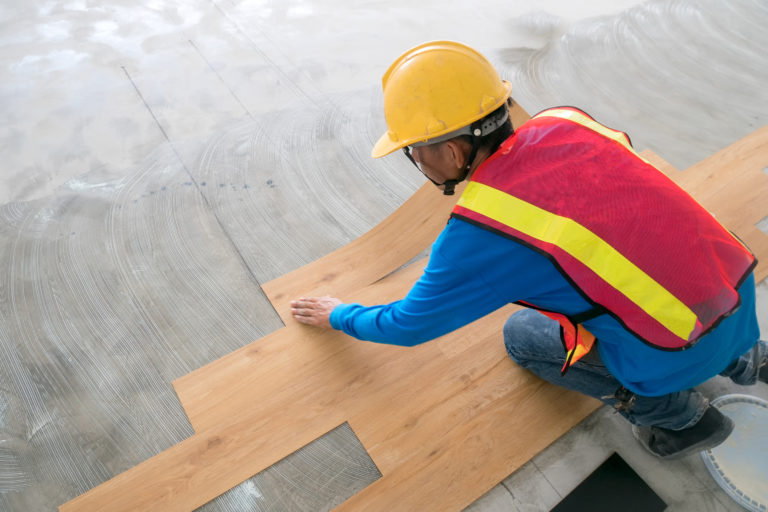This post may contain references or links to products from one or more partners of our parent company and/or subsidiaries of our parent company. For more information, visit this page.
November 26, 2020
Everyone knows that hardwood floors are the best. They’re beautiful, they’re strong, and they can look great for ages with proper care. But with so many types of wood flooring available, it can be difficult to decide what hardwood species is best for you.
But what exactly is a hardwood species? It’s simply the kind of tree your wood comes from! Hickory flooring comes from hickory trees; cork flooring comes from cork trees; mahogany… well, you get the point.
So what hardwood species are good for flooring? That’s a great question with a lot of answers! But don’t worry—below, we’re only going to break down the 26 best hardwood species around.
We’ll cover each hardwood species’ durability, grain pattern, and color. And while we’re at it, we’ll throw in a few hardwood floor alternatives so you can better weigh your options!
What Is the Strongest Hardwood Species?
Before we begin, let’s get this question out of the way (because everyone wants to know the answer).
Generally speaking, Brazilian walnut, aka ipe, is the strongest hardwood species commonly available as flooring. It ranks a whopping 3680 on the Janka scale (which we’ll discuss below)—making it about 150% stronger than red oak.
What Is the Strongest American Hardwood Species for Flooring?
If you’re looking for the strongest American hardwood species used for floors, that honor belongs to the (surprisingly) moderately-priced American hickory at an 1820 on the Janka scale.
There are some disadvantages of hickory flooring, but strength and durability are definitely not among them. We’ll also break down why this is one of our favorite types of flooring below.
What Is the Janka Hardness Scale?
The Janka scale, or Janka hardness test, simply measures how much force a particular type of wood can take before it becomes damaged. In general, the higher the score, the stronger the wood.
Wood species used for flooring generally rank between 800 and 3000+. Oak is the “industry standard” for hardwood, with a Janka score around 1300.
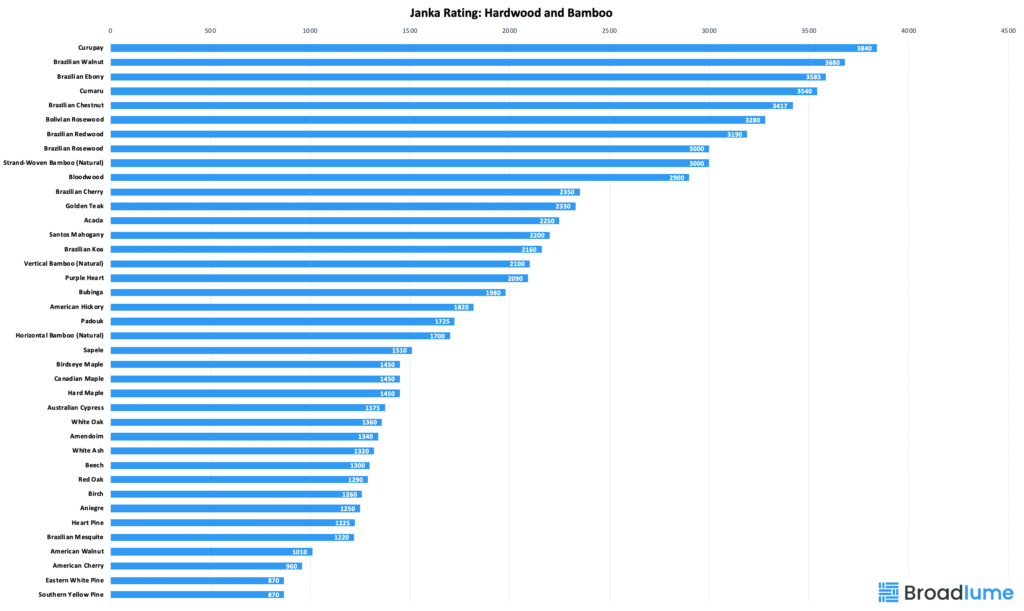
However, there are two caveats to the Janka score:
- It’s not a perfect measurement, as it doesn’t necessarily look at metrics like humidity and water resistance.
- There are different versions of the Janka scale, so don’t be too surprised to see different scores for the same hardwood species.
That being said, it’s the best method we have for measuring the durability of different wood species!
What’s the Difference Between a Hardwood Species and a Softwood Species?
Technically speaking, hardwood comes from deciduous trees like oak and maple. Hardwood is usually darker and denser than softwood, which comes from lighter coniferous trees like pine.
However, most people use “hardwood” and “softwood” as descriptors more than definitions. So even though trees like Australian cypress are technically softwoods (because cypress is a conifer), most people would describe it as a hardwood due to its high Janka score.
Confusing, we know!
The 26 Best Hardwood Species for Flooring
We’ve arrived at the main event! Below, we’ve compiled a list of 26 of the best hardwood species used for flooring. You’ll find a healthy mix of both domestic and imported (exotic) woods, along with a mix of hardwoods and softwoods.
So without further ado, let’s begin!
#1. Oak: The Most Common Domestic Hardwood Species for Flooring
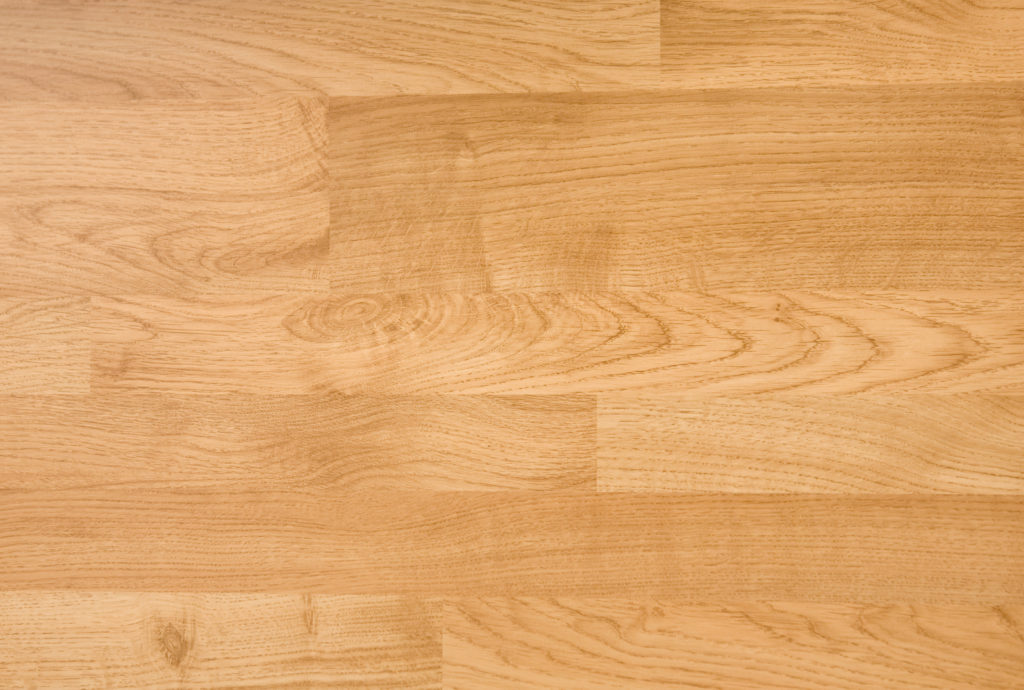
Oak is the most common hardwood flooring option in the United States, and for good reason. The grain is attractive, and while its natural colors are pleasant, it also takes stain very well (so you can get it in virtually any color you desire).
Oak is decently resistant to water damage (it was commonly used to build boats) and fairly durable overall. It doesn’t excel in any one category, but it scores highly across the board.
Higher-end options can get pricey but also carry a variety of perks like enhanced durability and/or nicer hues. On the other hand, cheap oak options exist too. Generally, oak costs between $3 to $9 per square foot.
If you like the idea of oak flooring, two species are the most common:
White Oak
Janka Score: 1360
White oak has cool, even, gray tones. It’s also a bit stronger than its red oak counterpart and still takes a stain well, which might make it more appealing for those who aren’t crazy about its natural hue.
Red Oak
Janka Score: 1290
Red oak is the softer of the two oak species commonly used for flooring and has warmer tones. It’s not as stain-friendly as white oak, but the difference is minimal. Its grain pattern is very similar.
Best Brands of 2024
#2. Ash: Contemporary and Stylish
Janka Score: 1320

Ash flooring has seen a bit of a price increase recently due to the mouthful that is the emerald ash borer beetle blight.
Translation: ash is becoming threatened by this beetle, which means prices are only likely to increase. Still, it’s a great flooring choice that fits very well with contemporary designs.
Ash generally comes in lighter hues, and the grain takes a stain well if you want something darker. It’s also considered one of the best engineered wood flooring choices because it’s durability makes for a stiff veneer.
#3. Teak: A Naturally Water-Resistant Hardwood Species
Janka Score: 2330
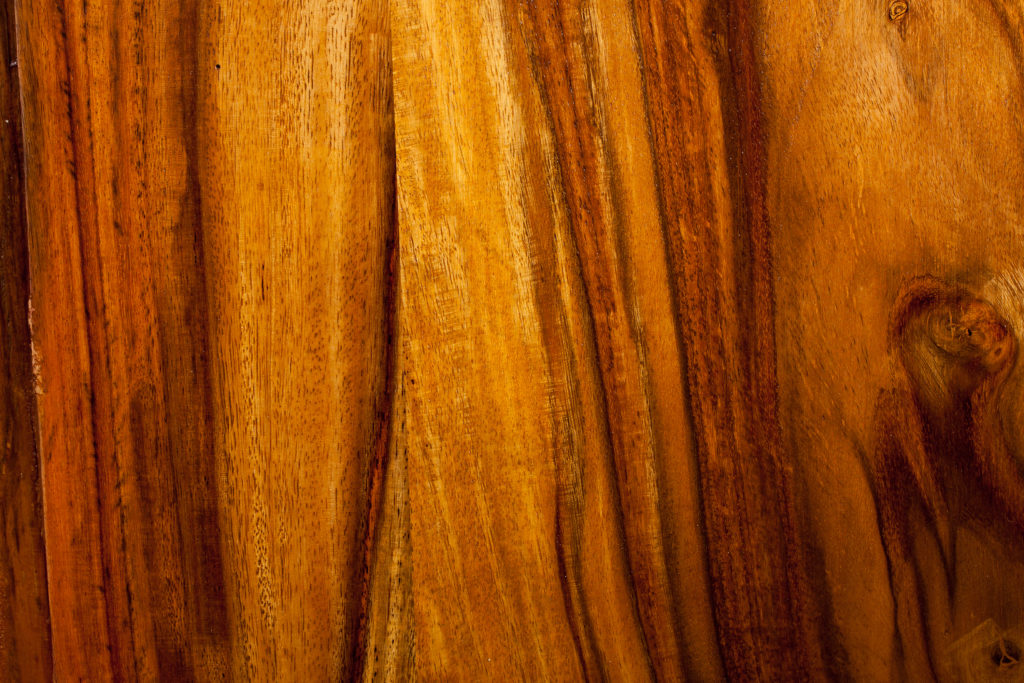
The pros and cons of teak flooring generally come down to three things:
- Teak has great water resistance for wood flooring.
- Teak is beautiful, with rich golden brown colors.
- Teak is fairly expensive—not crazy expensive, but it does land near the higher end of the spectrum as far as common hardwood species are concerned.
Side note: teak’s also one of the only real wood options that might be suitable for mudroom flooring, but we’d still recommend a waterproof hardwood floor alternative like RevWood or Pergo (check out some Pergo Extreme reviews for more info on this super-popular product).
Alternately, most types of floor tiles are totally waterproof as well.
#4. Pine: Soft, But With Tons of Personality
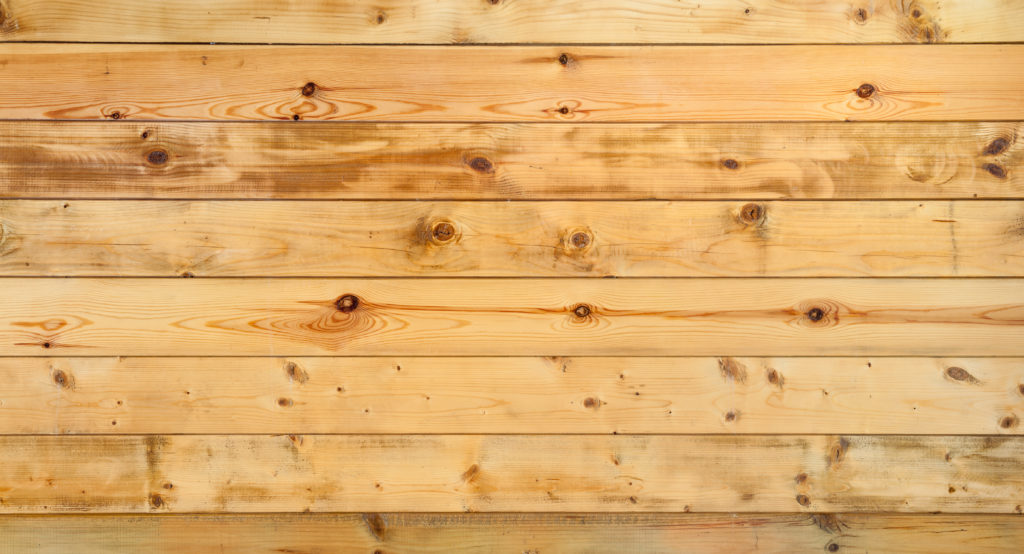
Pine isn’t technically a hardwood species. It’s a conifer, and its Janka score puts it more in the softwood category anyway. But that doesn’t mean pine wood is a bad choice for flooring! In fact, when you consider all the pine flooring pros and cons, it’s actually a pretty great option.
Pine is durable and, because it’s relatively easy to grow, it’s considered one of the more eco-friendly flooring options as far as wood flooring is concerned.
In terms of visuals, pine usually features lighter tones and a uniform, linear grain. It’s also one of the best floors for staining and is often sold unfinished for that purpose.
Heart Pine
Janka Score: 1225
Heart pine isn’t actually a distinct species. Rather, it refers to the heartwood—or innermost layer—of the pine tree. Heart pine is notably stronger than the outer layers which makes it great for flooring. However, it can sometimes be hard to tell what layer of pine a product is made of, so make sure to ask your local flooring store specifically for heart pine.
Eastern White Pine and Southern Yellow Pine
Janka Score: 870
Usually, pine flooring is made of either eastern white pine or southern yellow pine.
These outer, sapwood options are generally cheaper than the heartwood we mentioned above. But despite their lower Janka scores, they are durable when properly maintained.
#5: Maple: A Strong Hardwood Species with a Natural Creamy Color
Janka Score: 1450
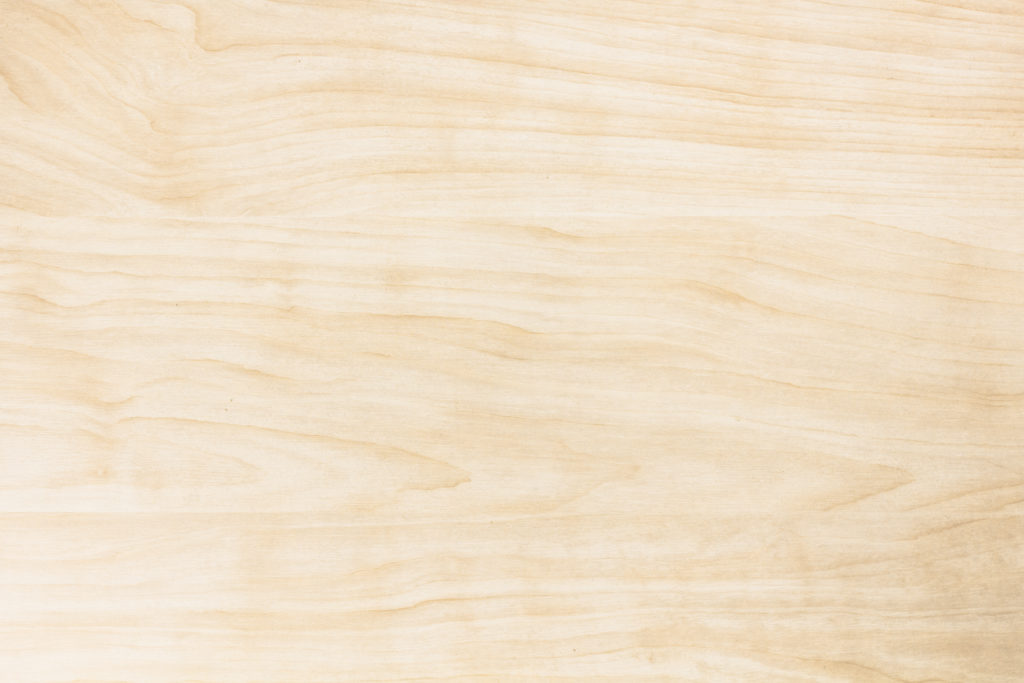
Hard maple, sometimes referred to as sugar maple, is an American staple. It’s often used for basketball courts because of its shock-absorbing properties and ease of care.
Maple usually takes on an even, thin grain and tends to have lighter cream-colored or tan hues.
One unusual fact about maple: unlike most other types of wood, its sapwood—aka the outer layer of wood—is more commonly used for flooring than its heartwood.
Just remember: when you buy maple flooring, you want hard or sugar maple (Acer saccharum). This is different from soft maple, which is a catch-all term for soft species that aren’t as suitable for flooring.
#6: Hickory: Durable with Tons of Character
Janka Score: 1820
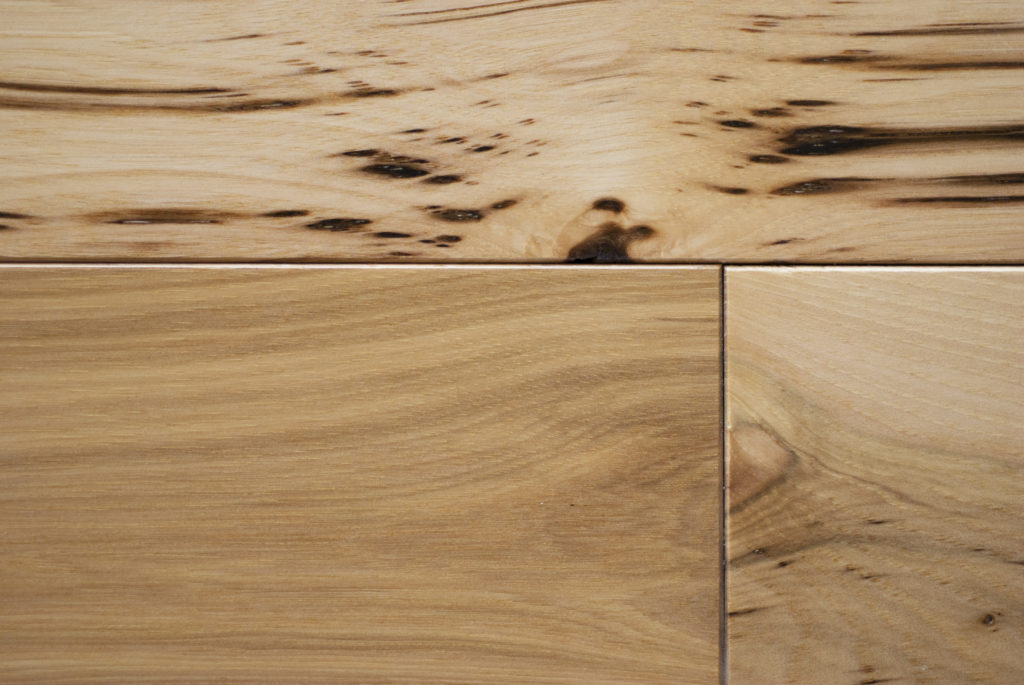
The hardest American hardwood species commonly used for flooring, hickory is surprisingly modest in terms of price. It’s usually more expensive than say, oak—but not by much.
Hickory is considered to have some of the most interesting wood floor patterns around. Its grain is often sporadic, and its hues vary dramatically from plank to plank. This might be off-putting for some buyers, but the quirky grain is also the reason hickory does so well in the rustic niche.
The pros and cons of hickory flooring tend to break down like this—it’s durable and easy to maintain, but its distinct grain is a little polarizing.
#7: Mahogany: A Rich and Exotic Wood Species
Janka Score: 900
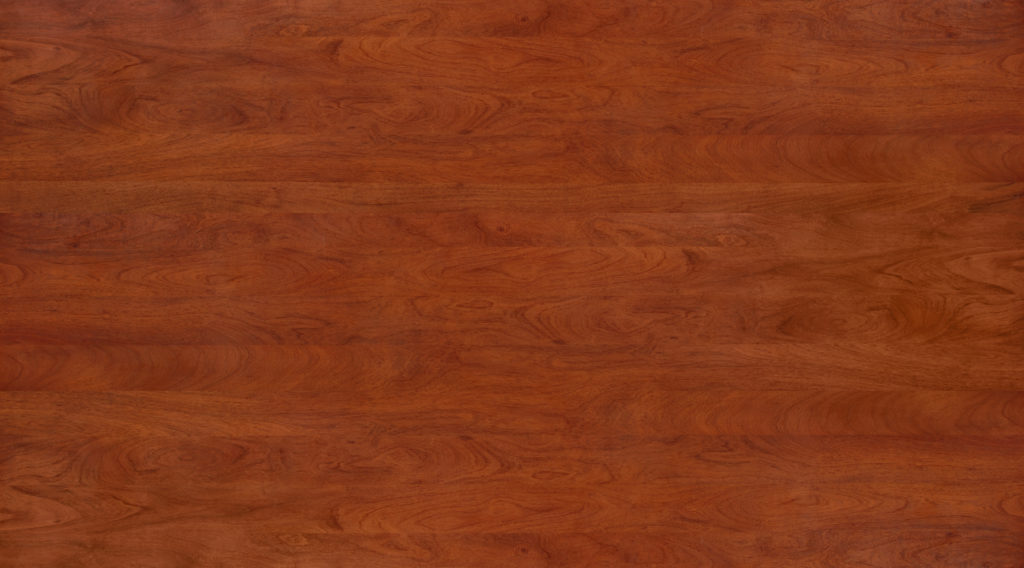
Mahogany is native to Central and South America and beloved for its rich color and even grain. Historically, mahogany has been used more for furniture than flooring, but plenty of outlets do sell mahogany floors.
Those who love mahogany prefer it for its subtle grain and full-bodied color. Whereas woods like hickory tend to be described as “busy” for their odd grain patterns, mahogany tends to fall on the other side of the spectrum.
One other point: mahogany is one of the softer hardwoods available, which may be why it’s harder to find genuine mahogany floors. That said, some of the best engineered wood flooring is made with this hardwood species!
#8. Douglas Fir: Locally-Grown and Easy-to-DIY
Janka Scale: 660
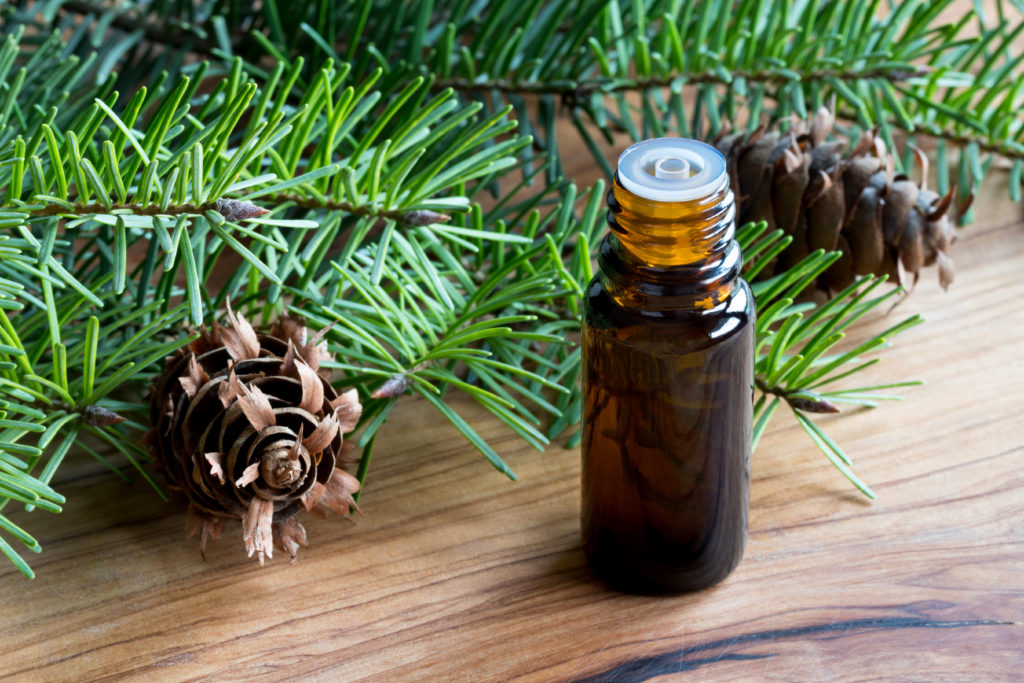
If you look into the pros and cons of Douglas fir flooring, you’ll find that, like pine, Douglas fir is a softwood rather than a hardwood species. However, as we said above, the line between softwood and hardwood is often a matter of opinion—so we chose to include it here because it makes a lovely floor!
Douglas fir’s lower Janka score means it’s fairly easy to dent and scratch, but it’s also super easy to work with and refinish. In fact, when it comes to cutting and finishing planks, Douglas fir is one of the easiest flooring types to install.
Douglas fir is also one of the most common domestic tree species, which makes it a very sustainable wood flooring option.
Two unusual characteristics of Douglas fir flooring: it’s oddly strong despite its lightweight, and it’s somewhat water-resistant. Not as water-resistant as vinyl flooring, but water-resistant nonetheless. There are definitely some vinyl plank flooring disadvantages, but it’s one of the most waterproof types of flooring around.
And pro tip: if you’ve been trying to choose between vinyl plank vs. laminate flooring, rest easy—you can find either in a Douglas fir look (or any other look, for that matter).
#9. American Walnut: Luxurious and Oh-So-Pretty
Janka Score: 1010
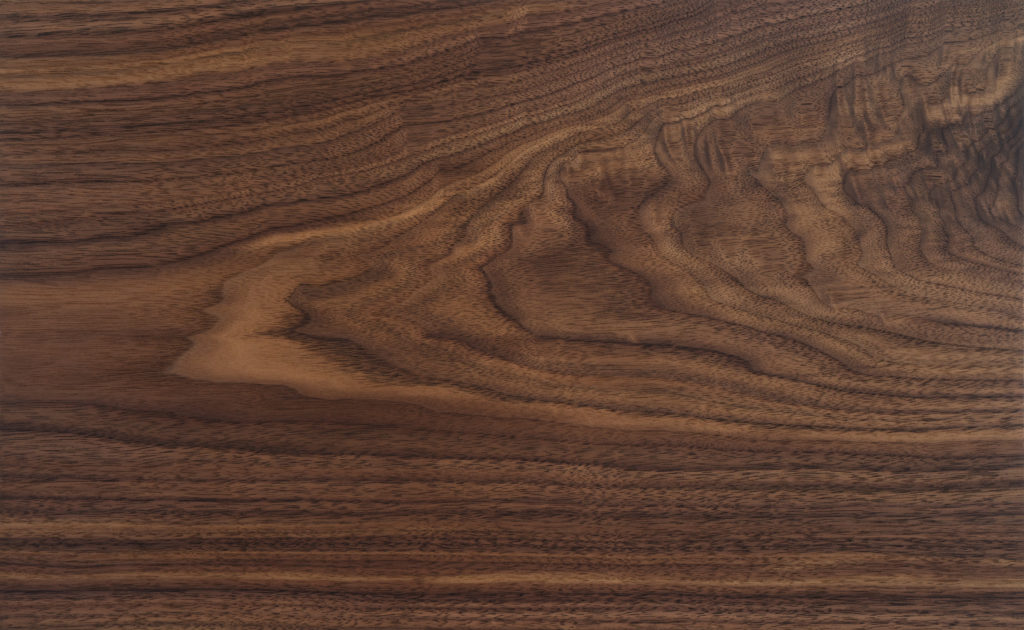
American walnut is a favorite among woodworkers for its luxurious, chocolatey color. Don’t confuse this option with Brazilian walnut, however. They aren’t really part of the same family, and American walnut is much softer.
Walnut is still acceptably durable though, and because of its naturally dark color, it may not show scratches as easily as lighter woods do.
On the downside, walnut is one of the more expensive domestic woods. But it makes up for that with an amazing color and texture!
#10. Ebony: Rare, Beautiful, and Bold
Janka Score: 3220
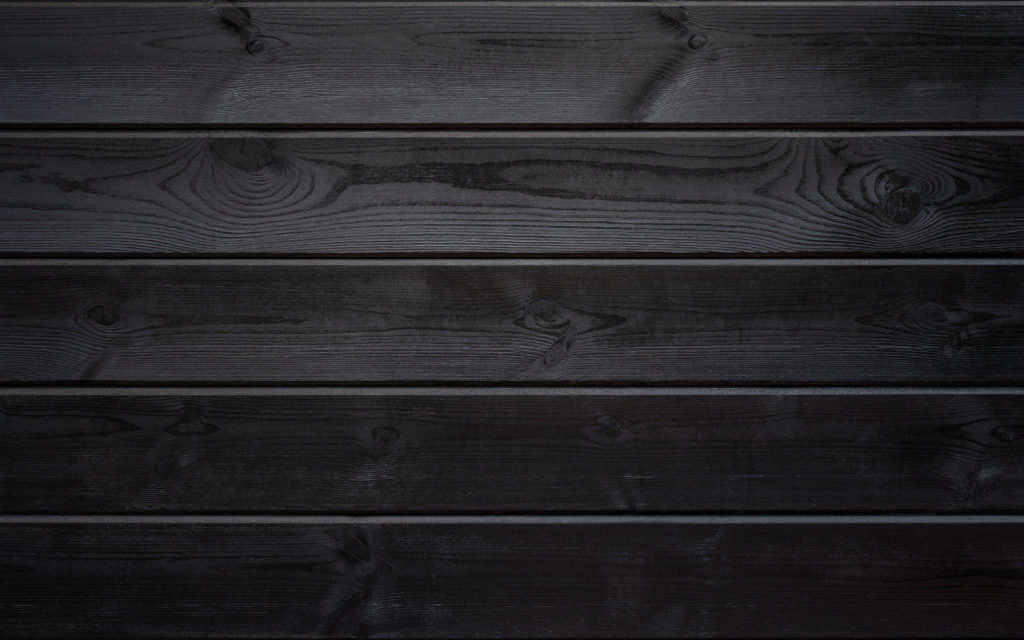
Ebony flooring is a bit of an oddity. Authentic ebony is very rare and equally expensive. And that means most of the options that you see on the market are actually ebony-stained wood rather than actual ebony.
As a threatened hardwood species, there are many restrictions on farming it, so the supply is limited and often reserved for non-flooring applications.
That being said, real ebony is intensely beautiful and strong. It’s the only real, natural wood that has a jet black hue—making it a coveted option in some circles. If you can get your hands on real, ethically-farmed ebony, it’s one of the most amazing hardwood species around.
#11. Australian Cypress: A Not-So-Soft Softwood With Tons of Personality
Janka Score: 1375
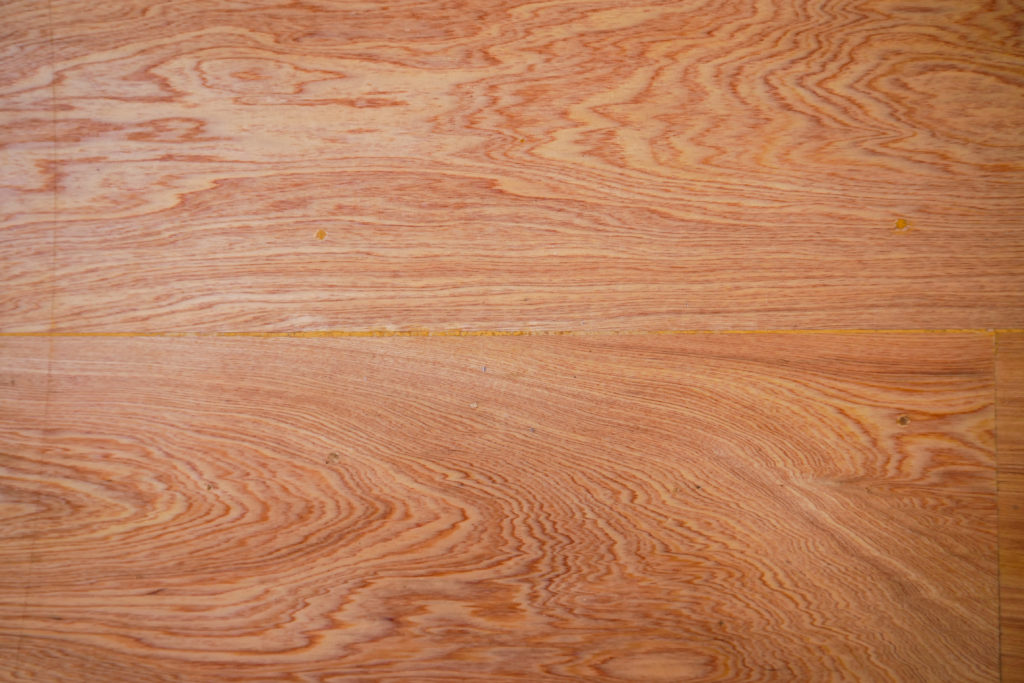
Add one more softwood to the list! Australian cypress is a great example of how the distinction between softwood and hardwood species isn’t absolute. Australian cypress wood is pretty strong, stronger even than some hardwoods on this list. The fact that it comes from a conifer, however, technically makes it a softwood.
Australian cypress, sometimes called white cypress pine because of its similar hues and grains, makes for some of the best engineered wood floors around because of its common use as a veneer. It’s also moderately priced for an import!
Best of all, though, Australian cypress packs a ton of personality in its grain. The wood is full of knots, and many planks feature numerous colors. If you’re looking for something with a lot of character, Australian cypress may be for you.
#12. American Chestnut: Threatened but Beautiful
Janka Score: 540
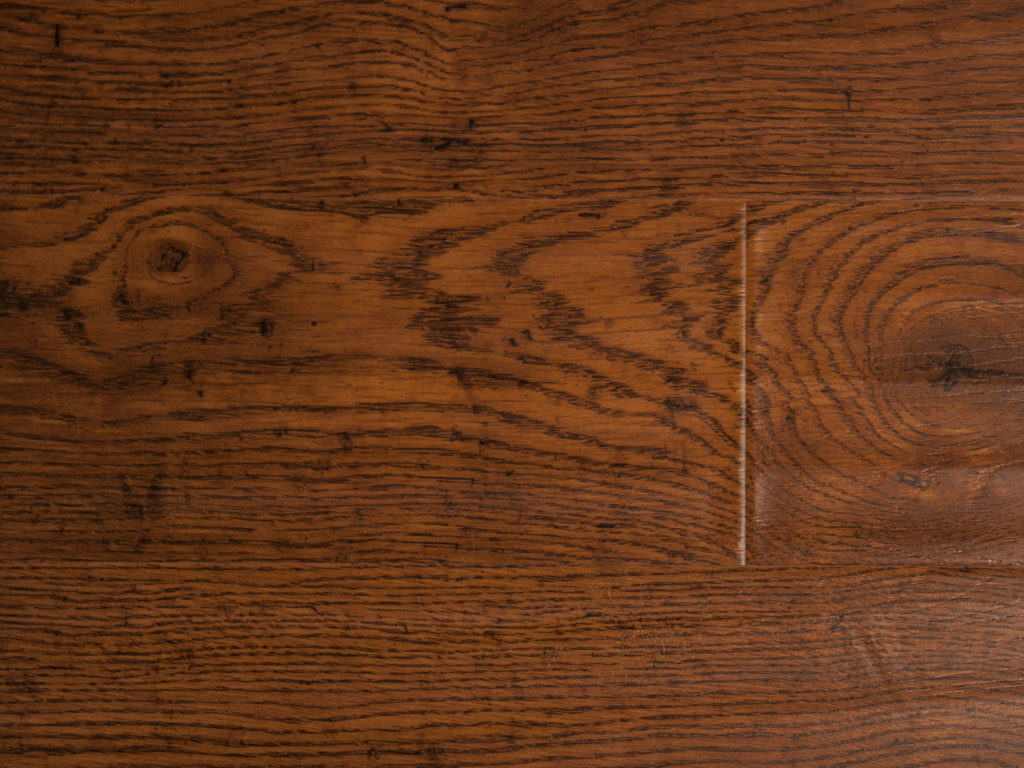
American chestnut is one of the most unique additions to our hardwood species list. It’s very rare—at least in terms of being used for flooring.
The tree was enjoyed as a frontier flooring option throughout the 1800s, but that all changed after an early-1900s blight nearly wiped out the American chestnut.
Today, chestnut is still used for flooring but rather than being farmed, it’s usually reclaimed from old barns and homes.
If you don’t want to go the reclaimed route, you can also get the look of this hardwood species in laminate, vinyl plank, or even wood-look tile. Yes, you read that right—you don’t have to compare tile vs. laminate anymore; with wood-look tile, you get the best of both worlds.
#13. Brazilian Chestnut (Sucupira): One of the Most Durable Hardwood Species
Janka Score: 3415
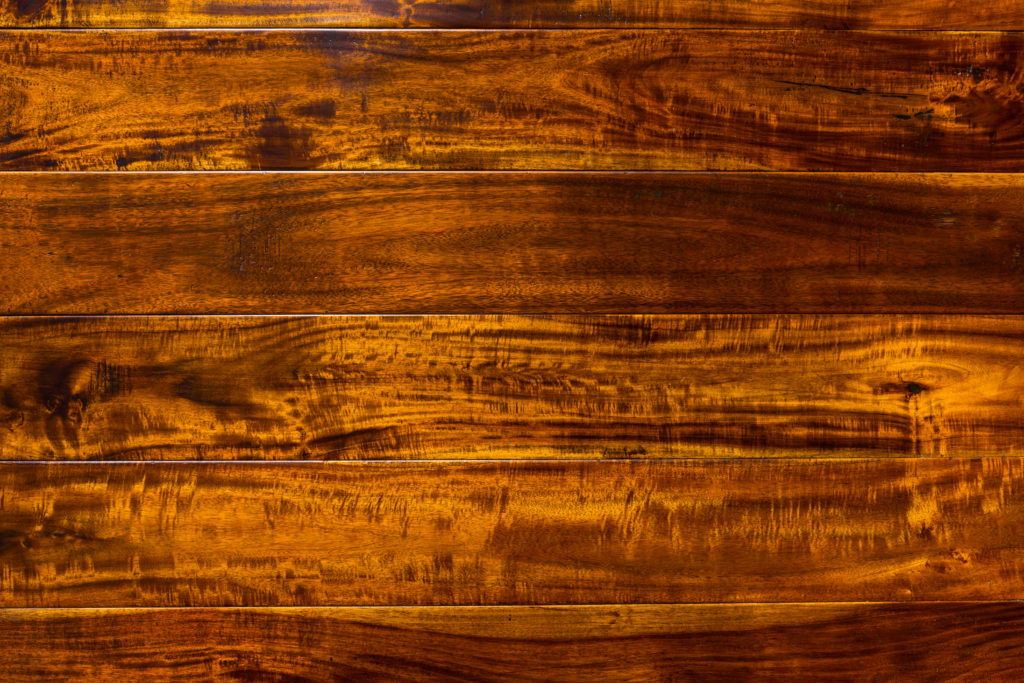
On the other side of the coin, we have sucupira, also known as Brazilian or Tiete chestnut. Like so many exotic hardwood species on this list, sucupira isn’t a true chestnut. Rather, the wood simply resembles chestnut. Why are people so bad at naming things?
Either way, Brazilian chestnut scores an extremely high 3415 on the Janka scale, making it one of the most durable wood flooring options in the world. Additionally, its rich chocolate hues and beautiful grain make it a top choice for flooring.
Oh, and it’s absolutely gorgeous with its deep, swirling grain.
#14. American (Black) Cherry: More Often Imitated than Actually Used for Flooring
Janka Score: 960

Despite also being called black cherry, American cherry wood often sports more of a reddish-brown hue. And people love it. That’s why so many manufacturers stain other, more durable hardwood species to resemble it!
Because of this, you’re more likely to find black cherry-stained floors than actual black cherry flooring—but the latter does exist if you want it.
#15. Brazilian Cherry (Jatoba): Pest-Resistant and Super Strong
Janka Score: 2350
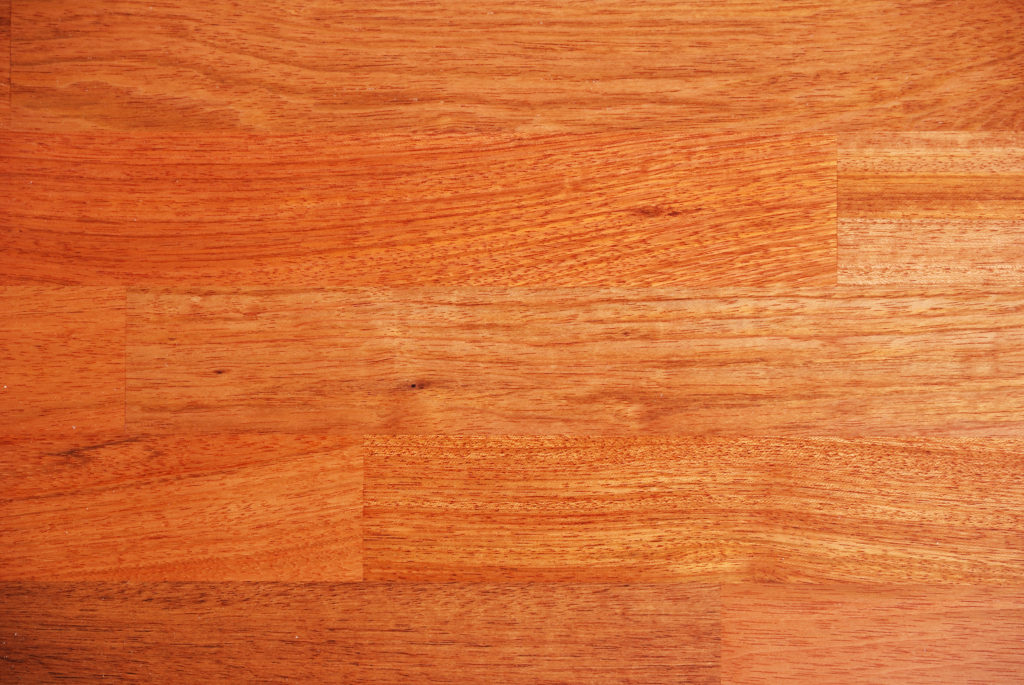
Jatoba, or Brazilian cherry, isn’t related to American cherry—and that’s pretty evident in just how strong it is. Its Janka score is more than double American cherry’s score!
Jatoba looks vaguely similar to mahogany, but it has more of a natural luster than many other types of hardwood. It’s also relatively inexpensive for an exotic hardwood species, and it’s perfectly usable for engineered wood flooring, too. Win-win!
#16. Birch: Light in Color (and Price)
Janka Score: 1260
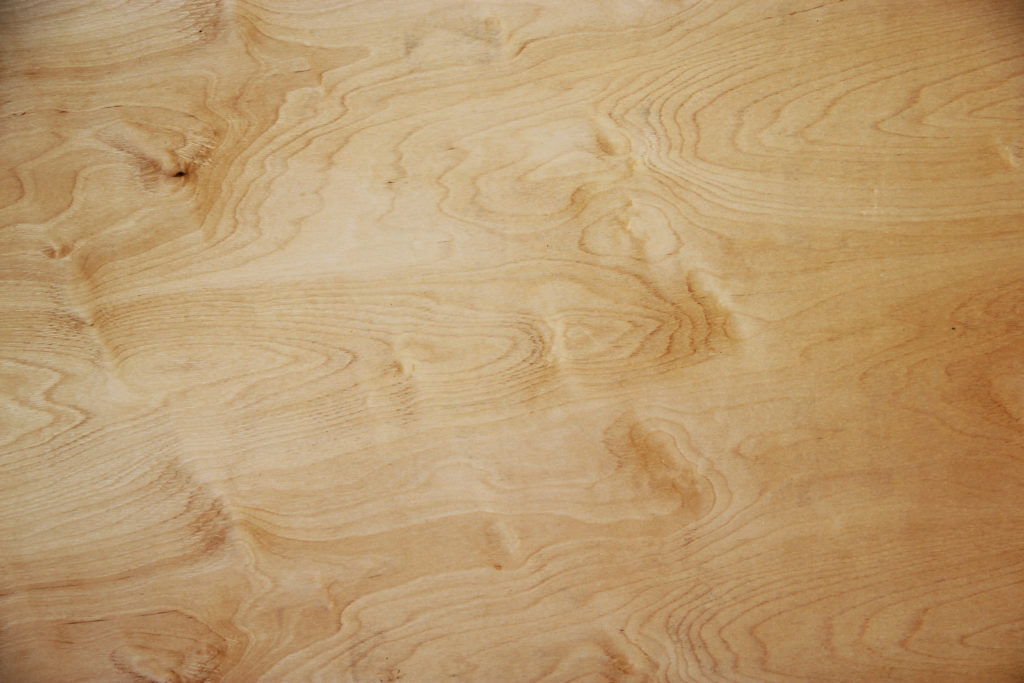
Birch is a lighter wood and comes in both domestic and imported options—neither of which are overly expensive. Birch ranges from $3 to $5 on average. For comparison, low-end options cost about the same as oak floors, but high-end birch can be bought for about half the price of high-end oak.
Birch isn’t the most common wood for flooring, but its durability and willingness to accept a stain makes it another one of the best engineered wood floors. Birch is also fairly storied, as its bark was used as notepaper by Ancient Romans.
#17. Merbau: A Threatened-Yet-Intriguing Import Option
Janka Score: 1925
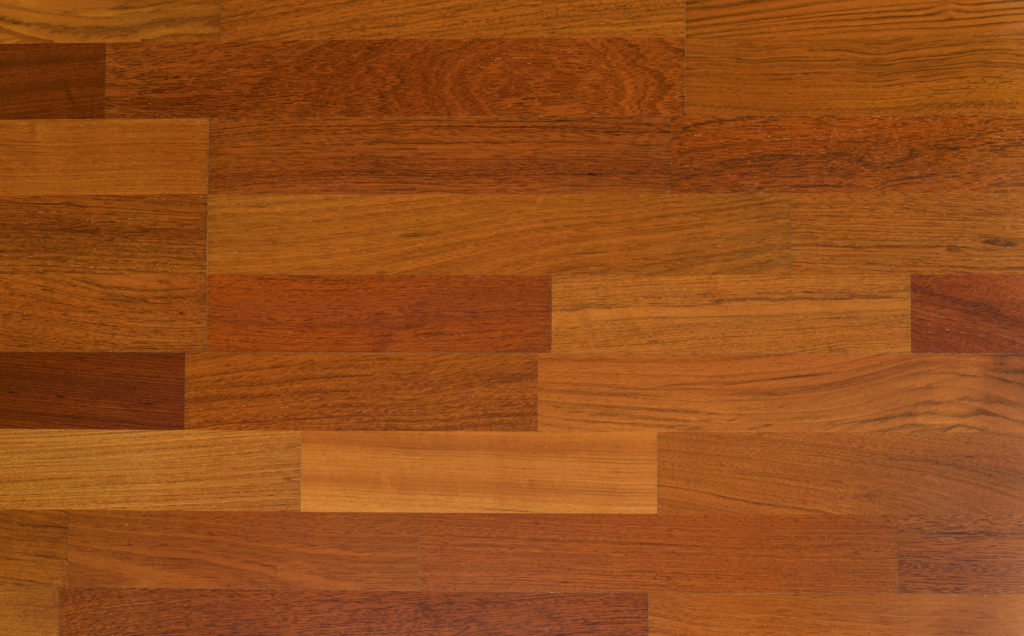
Merbau actually goes by a few different names, like kwila and ipil—probably because it can be found all over the world, from Australia to Southeast Asia—and even East Africa.
It’s commonly used for flooring in the Eastern Hemisphere—but in recent years, it’s begun to pop up in Western markets too. It’s generally sold as a modestly-priced alternative to domestic hardwood species and has even been called “eastern teak”.
Merbau isn’t particularly susceptible to rotting or pests. Plus, it finishes well, it features a gorgeous dark color, and isn’t too difficult to work with. This can make it appealing because these features generally tend to be restricted to more expensive exotic options.
Unfortunately, many of merbau’s local habitats are threatened by illegal logging, and the merbau population has declined as much as 20% in recent years. This may lead to a price bump in the near future.
#18. Mesquite: A Great Hardwood Species for Humid Climates
Janka Score: 1220
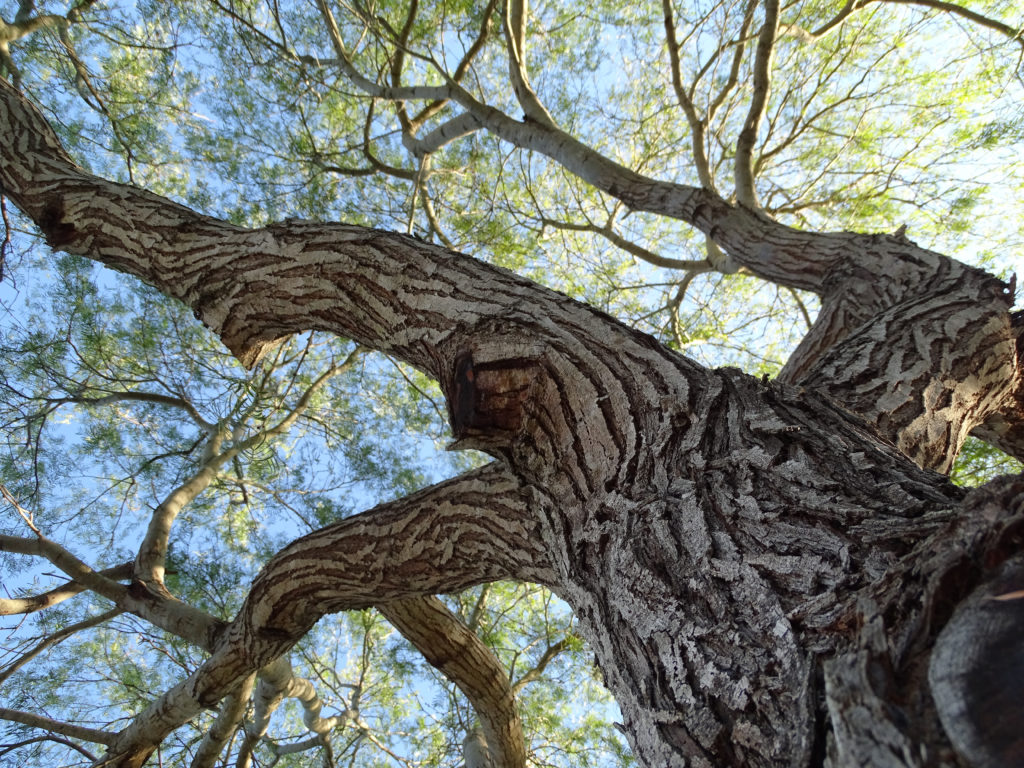
Mesquite tends to be associated more with barbeques than flooring, but it’s also great for other applications. This hardwood species is moderately durable, but its best feature is its great resistance to humidity. That doesn’t mean it’s waterproof, but mesquite does great in humid environments because it’s not prone to warping or bending.
Mesquite can be a little pricey for a domestic choice, though. Knots are common in the wood, so only a small portion of the lumber can be used for flooring as they can present structural vulnerabilities. However, these knots also give mesquite floors a ton of personality.
In terms of appearance, mesquite usually has reddish-brown colors and a wavy grain. And as with other pricey options, you can also find mesquite-look patterns in wood floor alternatives like non-toxic laminate flooring.
#19. Beech: A Light and Inexpensive Hardwood Species
Janka Score: 1300
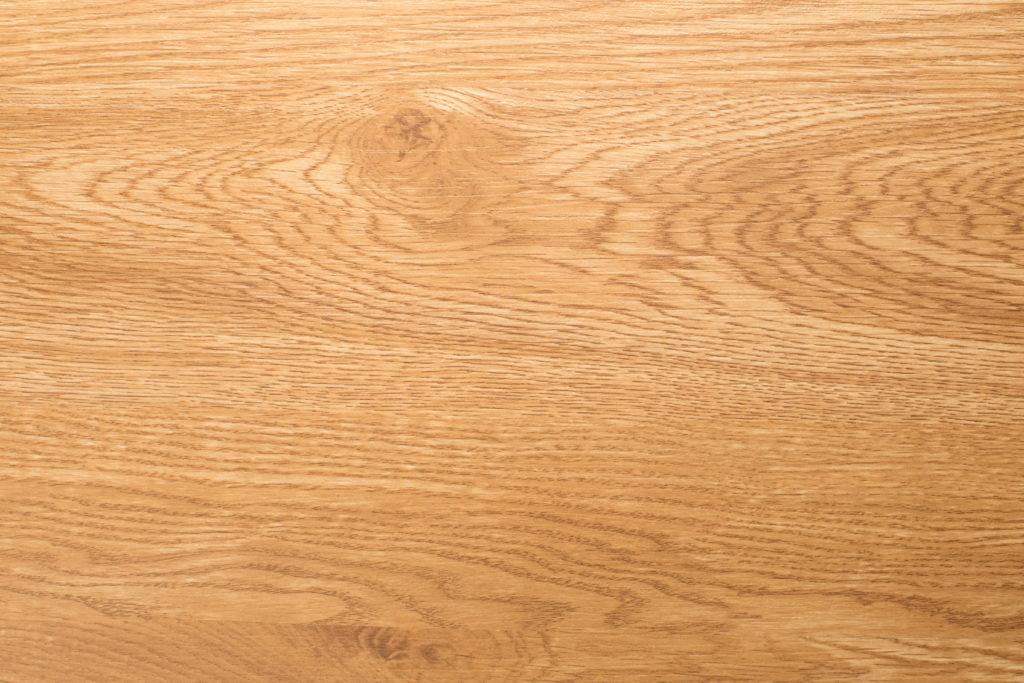
Beech is another hardwood species with both domestic and imported options. It’s fairly inexpensive and has great shock resistance, which is great for high-traffic areas. Beech is also pretty flexible, though that doesn’t necessarily add value to flooring.
Beech has a rather plain natural appearance, but its willingness to accept stains makes that an advantage. Naturally, this makes it a good option for engineered wood flooring too.
You might be more likely to beech wood in a brewery, though—beech is often used in the beer-making process because of its non-reactive properties.
#20. Padauk: A Moderately-Priced Hardwood Species with Warm Hues
Janka Score: 1725
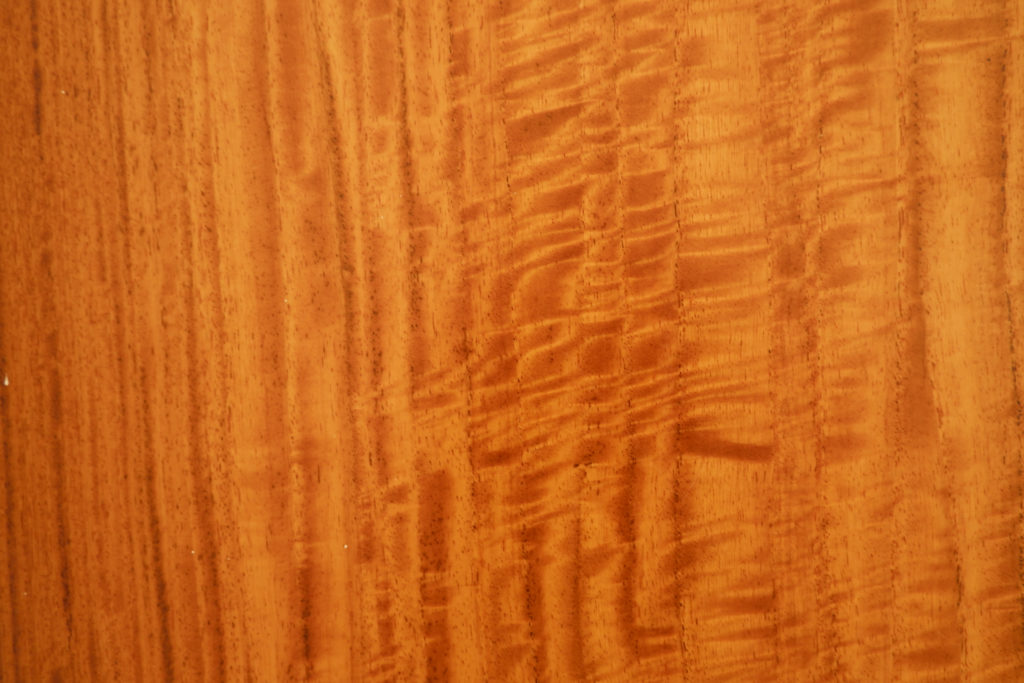
Padauk is an African import known equally for pest resistance and for being mispronounced (pah-DUKE, if you please).
Padauk is sometimes referred to as vermillion and has a vaguely similar appearance to mesquite—though with a much wavier grain.
Because of padauk’s moderate price and durability, it’s used as a substitute for other, more expensive hardwood species.
Here’s where things get interesting: if padauk is shaded from sunlight, it’s known to have bright orange tones (hence the “vermillion” moniker). However, this rather unique color will mature into the aforementioned red-brown color when exposed to too much UV light.
Translation: you might not want to use it as sunroom flooring.
#21. Sapele: A Stronger Mahogany Substitute
Janka Score: 1510
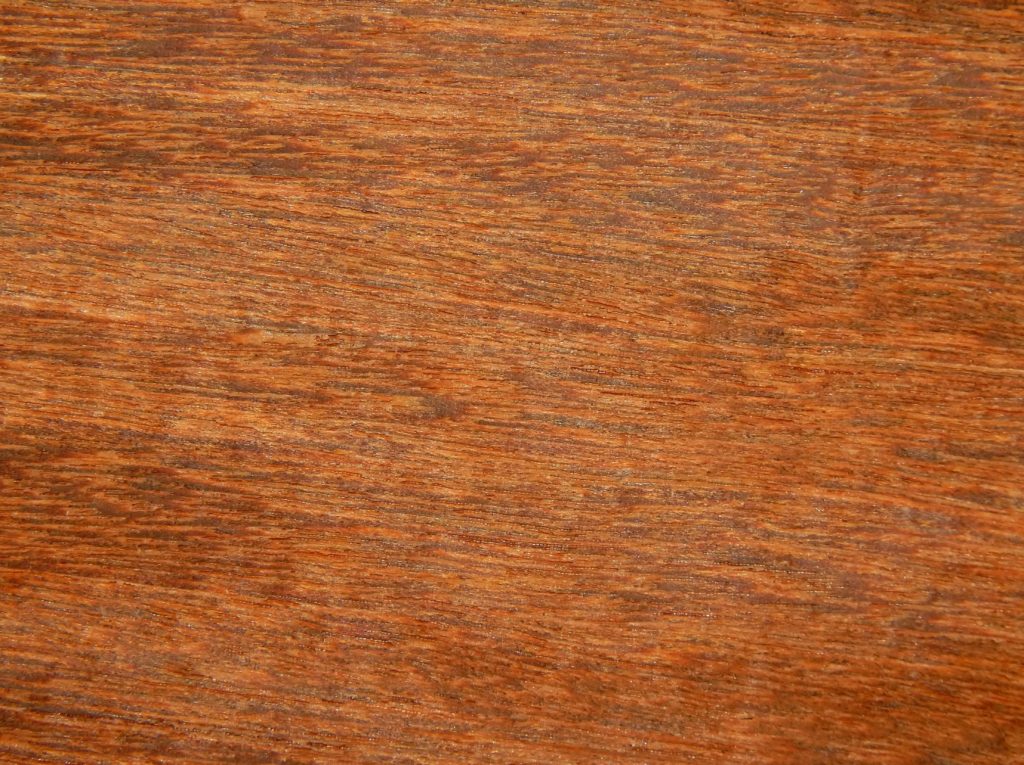
Sapele is usually used as an (admittedly expensive) imported substitute for mahogany because its appearance is eerily similar.
However, sapele is also significantly stronger, making it a more appropriate flooring choice for those with a lot of foot traffic in their homes—or a propensity to drop things (guilty).
Unfortunately, the hefty price for sapele is only likely to rise—as many of its ranges are threatened by deforestation and logging.
#22. Brazilian Teak (Cumaru): Exotic and Supremely Durable
Janka Score: 3540
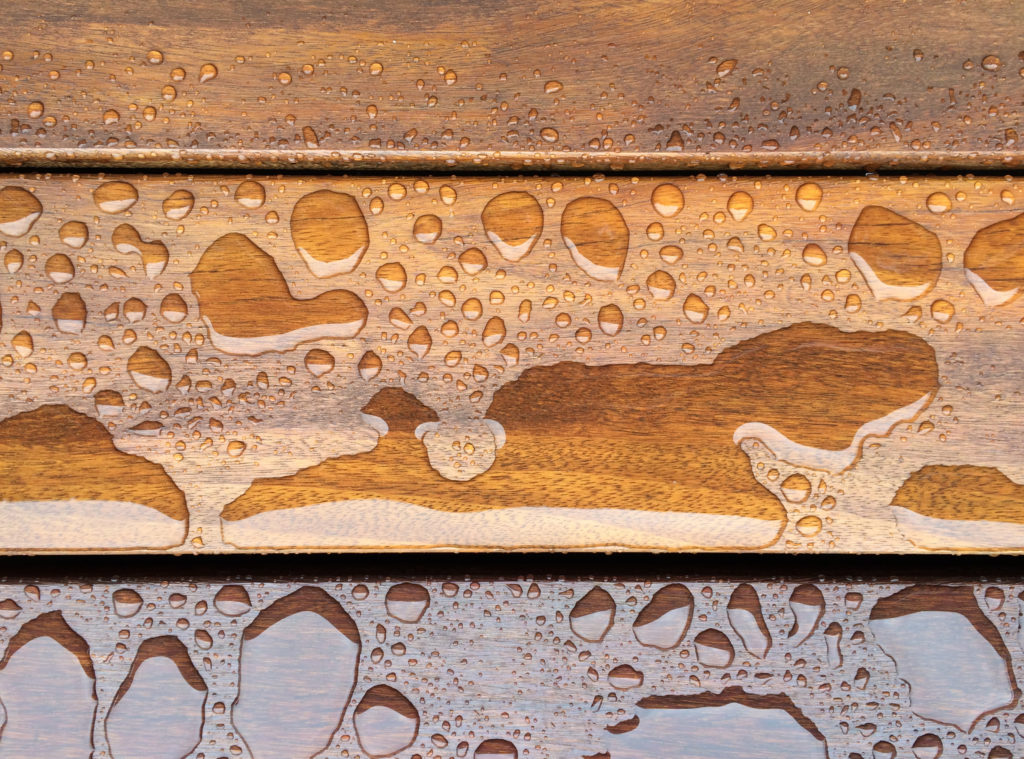
Brazilian teak, or cumaru, actually isn’t related to teak—though they do look fairly similar.
Brazilian teak is among the most durable wood flooring choices in the world. And yet, a decent supply has actually kept its price relatively modest.
Like Brazilian walnut, Brazilian teak is frequently used by many of the best engineered wood flooring brands because of its strength. However, it can be pretty difficult to work with and has an unusual resistance to adhesives and stains because of its natural oils.
#23. Kempas: A Newer Import from Southeast Asia
Janka Score: 1710
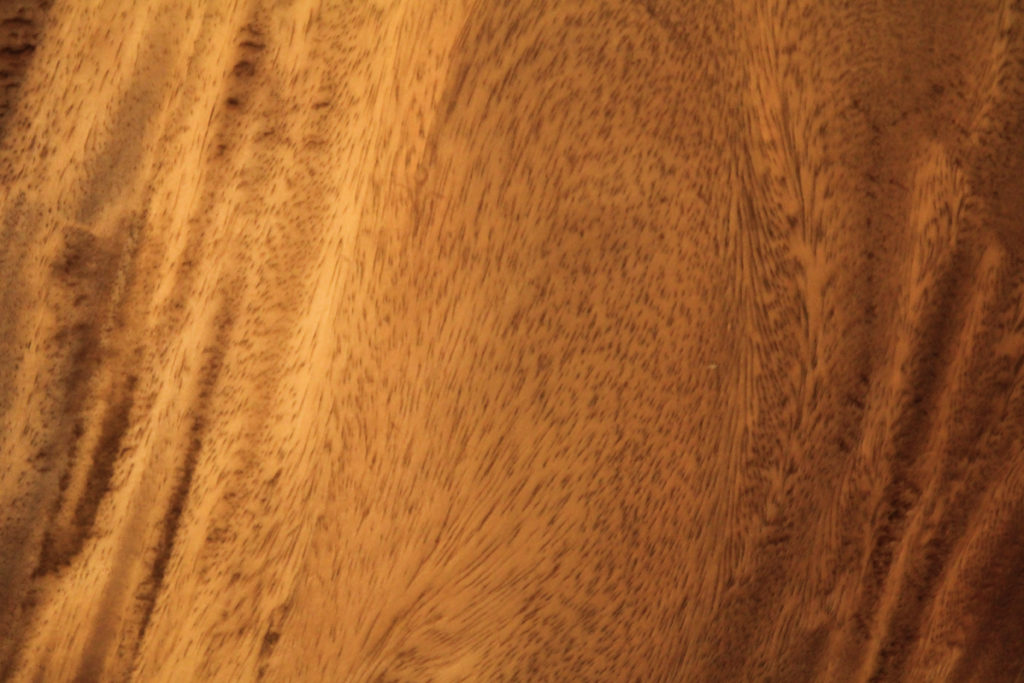
Kempas isn’t widely known in the United States because it’s still rather new to the flooring market. And the only market this hardwood species seems to be a part of is the flooring market.
Kempas tends to be sold as a cheaper exotic import that takes stain and finishes quite well. Though it has a decent Janka score, it’s known to be structurally weak so any application in your home should have a good subflooring to keep it secure. So long as it has a good foundation, kempas is actually quite strong though!
Kempas’ natural appearance doesn’t really stand out: it looks like a much lighter version of mahogany. However, the benefit here is that kempas can act like a blank slate for virtually any wood floor colors you desire.
#24. Tigerwood (Goncalo Alves): A Durable Hardwood Species That’s DIY-Friendly
Janka Score: 2250
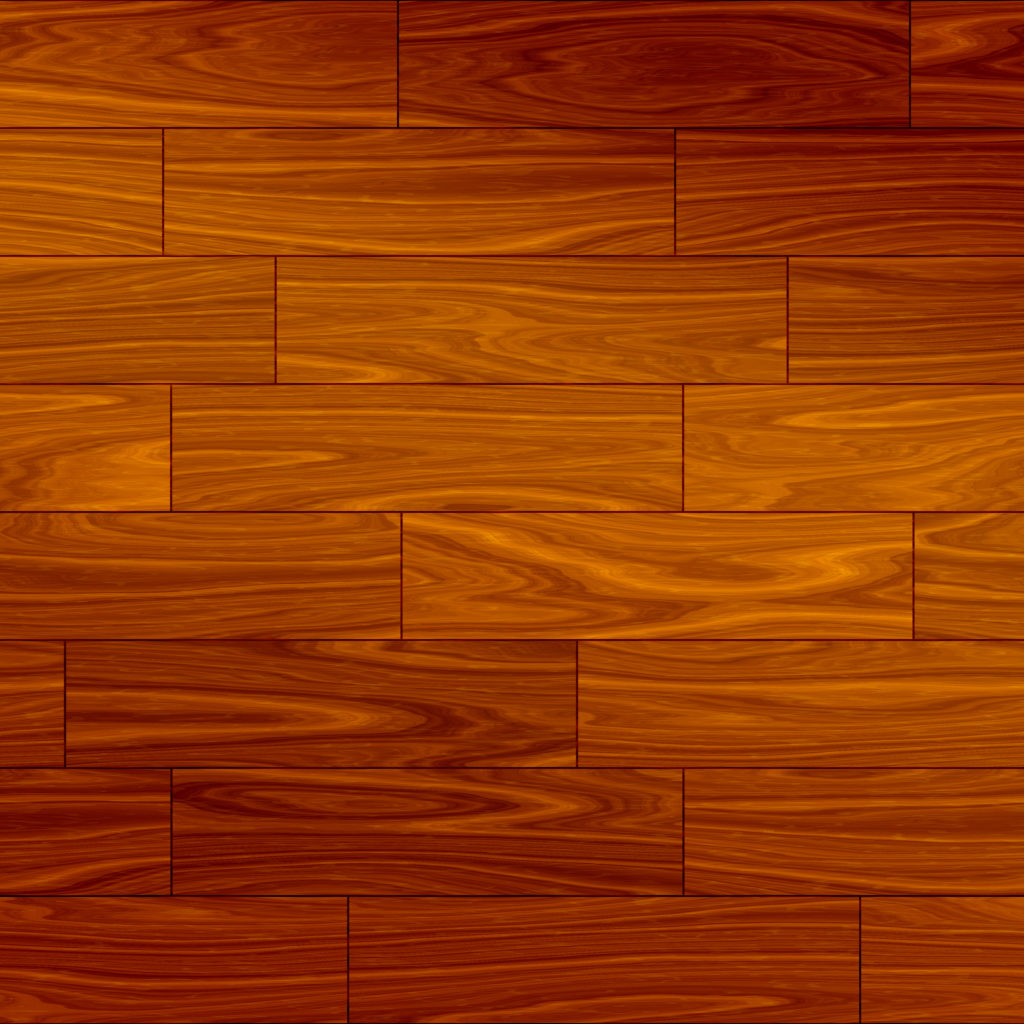
Not to be confused with the golfer, tigerwood has the rare distinction of having a Janka score over 2000 without sacrificing workability. Tigerwood’s grain mixes darker and lighter patches, giving it an appearance similar to that of a Bengal tiger (hence the name).
Because of its durability, even in thin slices, this hardwood species is a great choice for engineered wood manufacturers—and an equally great choice for homeowners because of its moderate price.
#25: Santos Mahogany: A Durable, Beautiful Mahogany Alternative
Janka Score: 2200
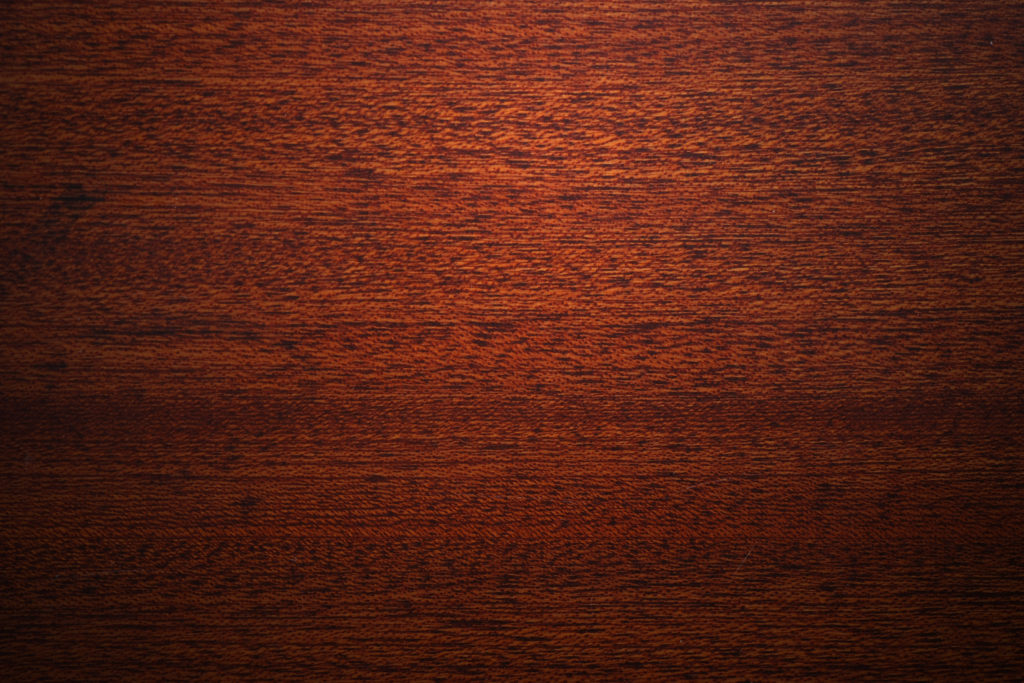
Santos mahogany is yet another substitute for genuine mahogany, though it lacks an actual family relation. It’s a much stronger and denser hardwood species than real mahogany, though—and arguably makes for a better flooring option.
If you’re considering engineered mahogany wood flooring, there’s a pretty good chance that the manufacturer is actually using Santos mahogany—because it works so well as a veneer.
Bonus fact: Santos mahogany has a pleasant aroma that often finds its way into Central and South American perfumes.
#26. Brazilian Walnut (Ipe): Beautiful, Heavy Duty, and Hard
Janka Score: 3680
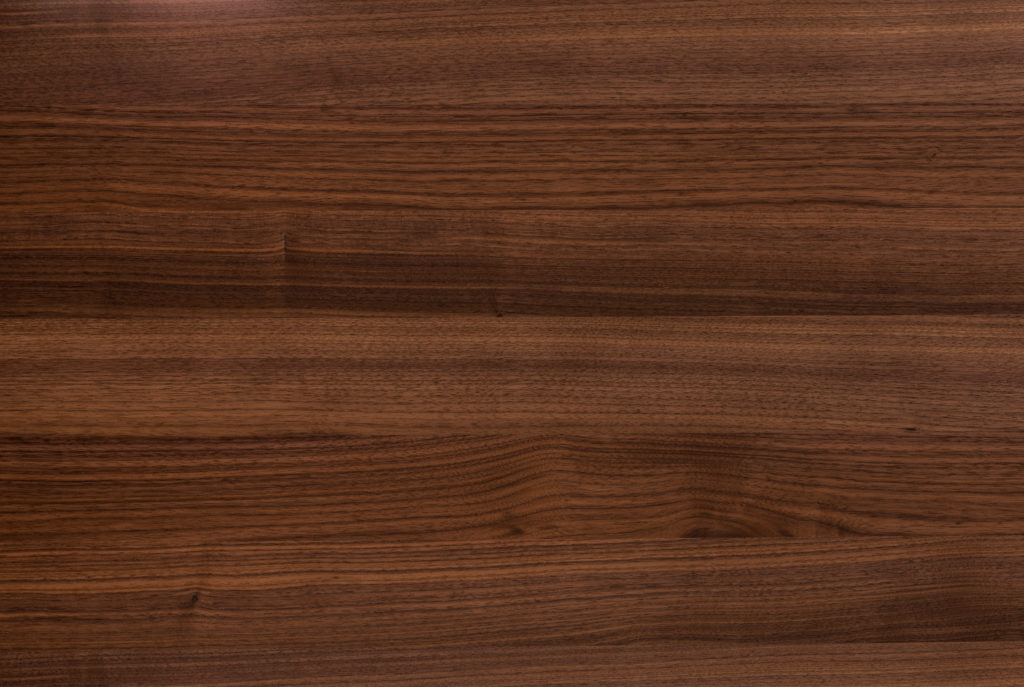
If you’ve made it to #26, kudos!
Brazilian walnut, also known as ipe, is arguably the most durable wood flooring in the world with a Janka rating of 3680.
Brazilian walnut is another example of how hardwood species can be given a misleading name, as ipe is not a species of walnut tree. However, these two hardwood species do have a similar chocolate color and grain.
Brazilian walnut is not particularly common, as ipe grows in very small ranges and can be hard to access. And as you might imagine, that makes ipe not the most environmentally friendly flooring in the world. Farming practices can be dubious, and unscrupulous logging companies have been known to clear-cut neighboring forests of little value in order to reach it.
Consequently, ipe can be a little more expensive than other imported, exotic hardwood species. So if you need a surface that has a 3000+ Janka score, you might be better off looking into the pros and cons of engineered bamboo flooring instead. But hey—you do you, friend!
Bonus: Is Engineered Hardwood Good for Flooring?
Before we conclude this little guide to hardwood species, let’s talk a little about engineered wood.
No, engineered wood isn’t fake wood flooring. Sure, the name makes it sound like it was made in a lab, but engineered wood is 100% real. The difference is that, instead of being made from one solid piece of wood, engineered wood combines a high-strength plywood (or oriented strand board) core with a solid wood veneer.
Are there engineered wood disadvantages? Sure. But on the whole, they’re few and far between. Why?
- Engineered wood is less susceptible to swelling and warping from moisture and heat, meaning it’s better for kitchens and basements.
- It can be installed directly over concrete, which solid wood can’t.
- Because engineered wood can often be purchased as a floating floor (similar to snap-together tile flooring), the cost to install engineered hardwood floors can be significantly lower than for solid wood.
- The disadvantages of floating floors are nearly nonexistent with proper subflooring and installation (what is subflooring? It’s the rough surface under your floor).
- And best of all, because engineered wood uses less “solid” wood in its construction, it’s a more affordable way to purchase expensive or exotic hardwood species!
Conclusion: What’s the Best Hardwood Species for Flooring?
Oak-kay (sorry), back to the main point—the 26 best hardwood species for flooring! By now, you’re probably wondering what our favorite choice is. It’s a fair question, but one that doesn’t have a real answer. Personal preference is going to be the only real consideration here!
With that in mind, a better question might be “what’s the best hardwood floor brand?” or “what’s the cost to replace carpet with hardwood?”. Because in our opinion, all of these hardwood species choices are winners.
Either way: now that you know all about the best hardwood species for flooring, it’s time to find a top-rated flooring store near you. Local flooring retailers know everything there is to know about hardwood species, and they can answer any and all questions you have. They’re the best resource!
But if you’re not quite ready to talk to an expert just yet, feel free to read up on more flooring-focused info below. And as always, happy flooring!
- A Guide to Peel-and-Stick Carpet Tiles (& 9 Reasons They’re Amazing)
- Carpet vs. Laminate: The *Real* Pros & Cons
- The Ultimate Guide to Low-VOC Carpet
- Is the Cork Flooring Lowes Sells Actually Worth Buying?
- The Ultimate Guide to Low-VOC Flooring
- Can You Refinish Bamboo Flooring? Here’s How
- Advantages & Disadvantages of Cork Flooring
- Hemp Flooring: Your Complete Guide to Hemp Wood
- The Low-VOC Vinyl Flooring Buying Guide
About The Author

Christian Southards
November 26, 2020
Christian is a freelance everything-writer, editor, and interior design nerd. When he’s not writing about flooring and remodeling, he’s either writing news for the California American Legion or working with his hands on his house. His favorite type of flooring is hardwood, but admits to having carpet in his bedroom.
